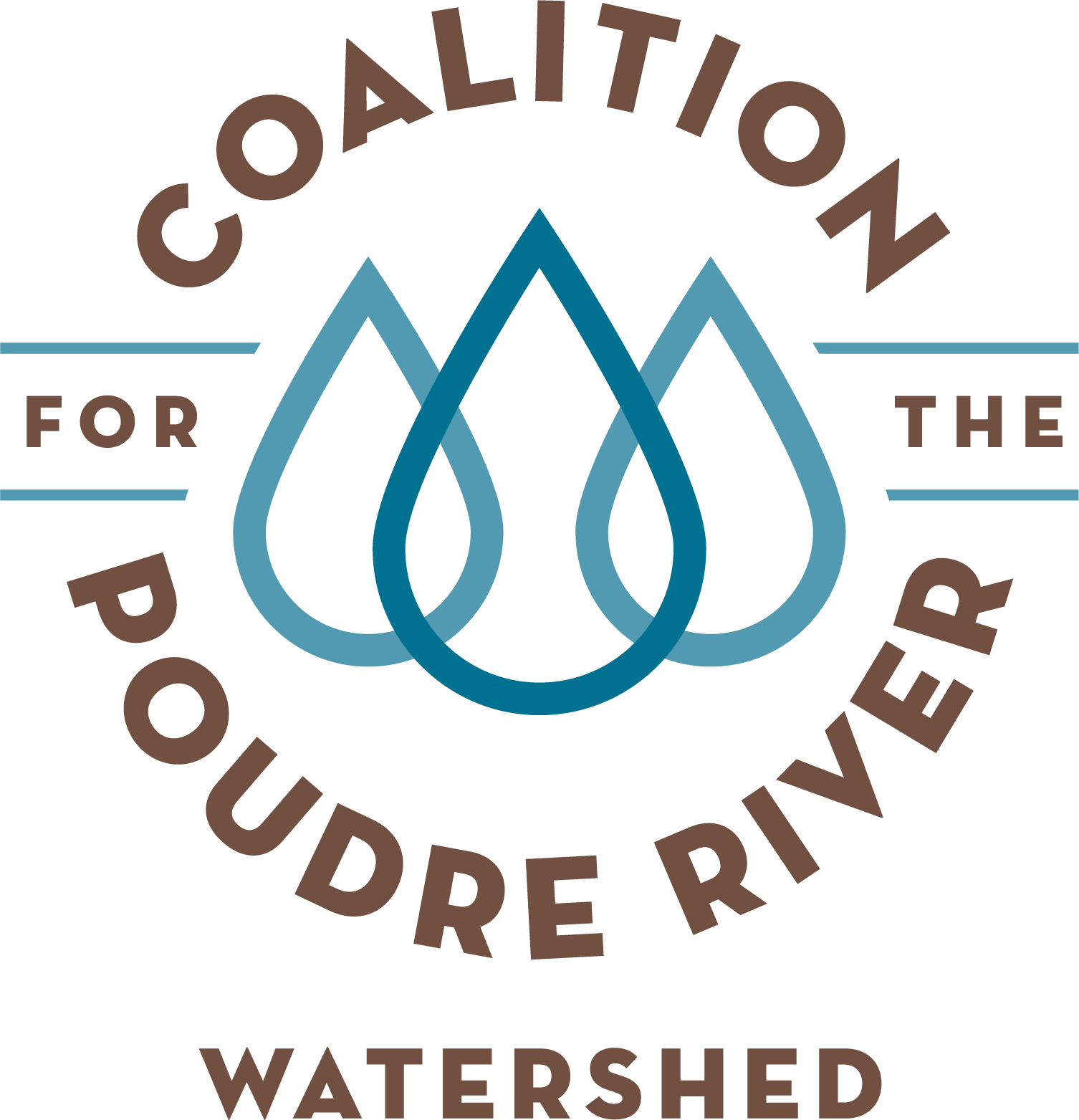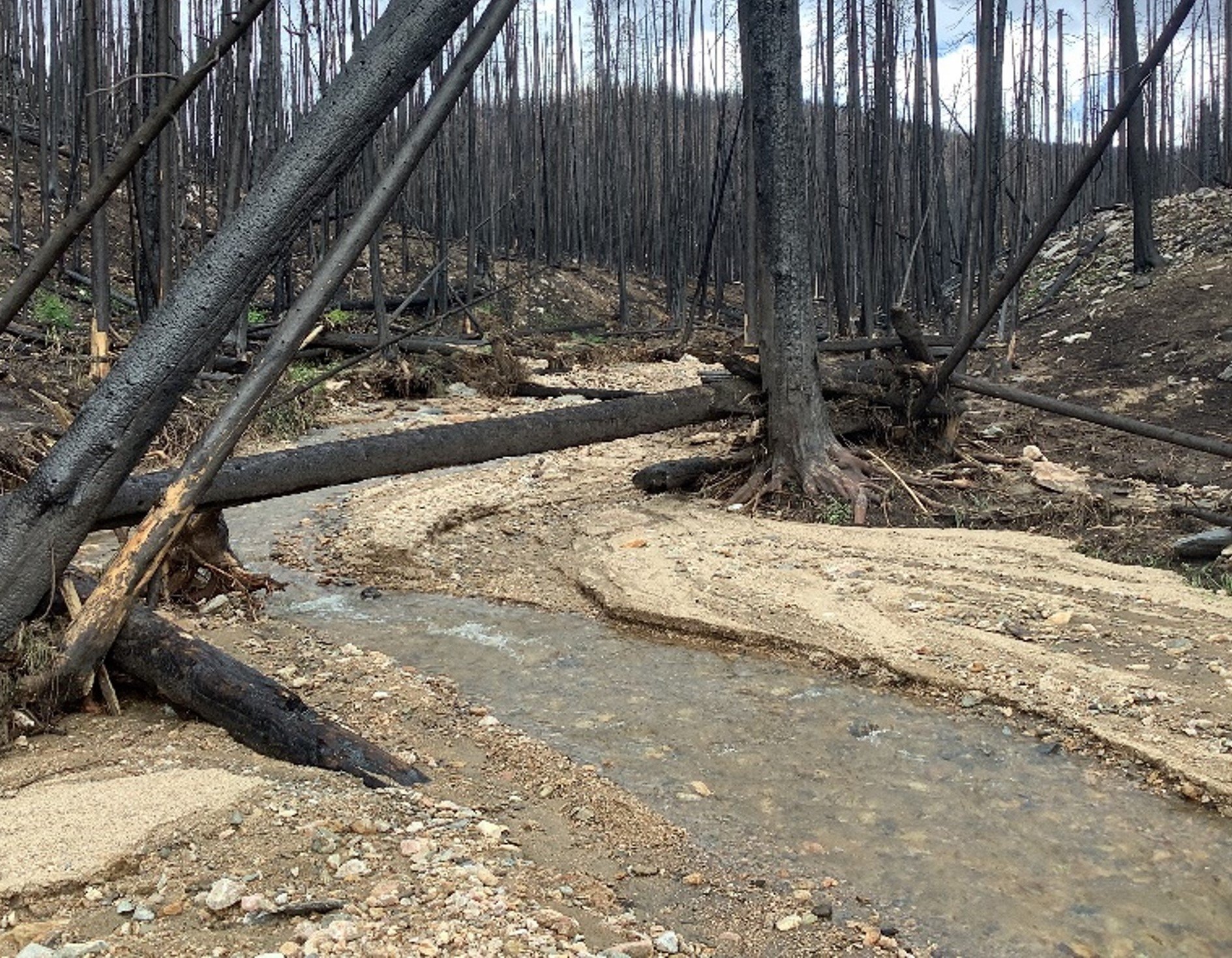Wildfire in the Watershed: Post-Fire Hydrology
“Wildfires affect almost all runoff processes within a watershed including infiltration, evapotranspiration, and landscape roughness, generally resulting in more rapid runoff and larger runoff volumes. This increase in runoff volumes and velocities substantially increases sediment yields (USDA, 2016).” - Ayers & Associates, 2021
If you live in the Poudre Watershed, or enjoy recreation on the Poudre River, you have no doubt witnessed first hand the impacts of wildfire in the watershed. Post-fire hydrology can be fascinating to learn about and follow, especially if you live in a watershed that has been recently impacted by a large wildfire, such as the Cameron Peak Fire of 2020. The risk of flooding and erosion increase greatly after a wildfire and can have both short- and long-term impacts on water supplies, such as increased treatment costs, need for alternative supplies, and diminished reservoir capacity.
The three main drivers of increased sediment yields to streams and large river systems post wildfire are: 1) Hillslope erosion to streams; 2) Stream incision and headcutting; and 3) Roadway damage
Hillslope riling and erosion has caused local deposition in riparian environment in the Black Hollow watershed.
Hillslope Erosion to Streams – The removal of protective vegetation due to forest fires results in the destabilization of soils and soil structures (USDA, 2016). Hillslopes are stabilized and protected by a combination of forest canopies, intercepting rain drop impacts, root structures, holding soil particles in place, and forest litter, dampening sheet flow velocities. Post-fire, destabilized soils are more vulnerable to increase runoff volumes caused by reduced evapotranspiration, raindrop interception, and infiltration. This increase vulnerability and runoff volume combine to create massive riling on burnt hillslopes which mobilizes sand, silt, and ash into adjacent river systems to be transported downstream.
Stream Incision and Headcutting – As discussed previously, wildfires result in more discharge in stream systems. Increases in flow is more pronounced in smaller systems where high-severity burn can dominate contributing areas. In addition, runoff generating events are more common after a fire causing channel heads, topographic inflection points that mark the transition from hillslope to channel flow, to migrate upstream through incision and downcutting. Downcutting can degrade and destroy valuable riparian and wetland habitat. Headcuts occur when hydraulic forces overcome surface resistance which is influenced by sediment size and vegetation stabilization (Wohl, 2014). Since vegetation resistance is lost during a wildfire, headcuts are more likely to trigger and less likely to stabilize in a post-fire watershed. Headcuts result in significant sediment pulses transported downstream and may impact vulnerable habitat and infrastructure.
An example of headcutting and resulting incision in a post-fire watershed.
Road damage resulting from increased runoff generate in a post-fire watershed during a 2021 summer storm event.
Roadway Drainage – The increase in runoff associated with post-fire hydrology are likely to overwhelm existing road drainage infrastructure leading to instability and increased sedimentation to creeks and riparian environments. This indirect impact is even more pronounced on US Forest Service areas where some abandoned roads are eroding into drainages. Work in the Cameron Peak burn area has some focus on improving roads that are desired and planned for access into non-wilderness areas and removing abandoned roads that imped connectivity and increase sedimentation.
The primary objective of CPRW and our partner’s post-fire recovery efforts are to reduce flood risk to life, property, and other valuable assets at risk (VAR) during the 10-year period following the Cameron Peak Fire.
The main secondary objective is to mitigate the water quality impacts resulting from the increased sediment influx from fire-affected basins tributary to the Poudre River and Big Thompson. Increased sediment inputs will likely result in intake shutoffs, increased treatment costs, and degraded water quality for communities across northern Colorado as seen during 2021. During 2021, all water providers were unable to treat water from post-fire watershed for prolonged periods due to degraded water quality. In addition, increases in sediment yield impacts local fish habitat and species (Short et al., 2015).
To learn more about CPRW’s Post-Fire Restoration Program visit: https://www.poudrewatershed.org/cpf-restoration
This blog post was adapted from Ayers Associates “Cameron Peak Fire: 2022 Point Mitigation Priorities, Concepts, and Implementation” report published November 9, 2021.




